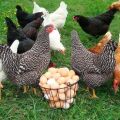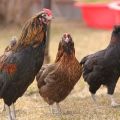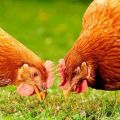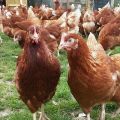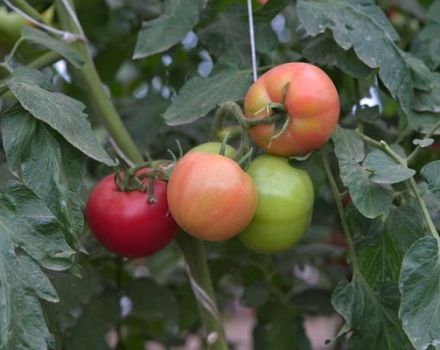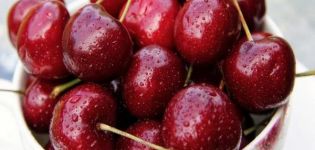Dosage and how to properly give meat and bone meal to chickens
Bone meal for broiler chickens accelerates weight gain and reduces the risk of respiratory diseases. In egg breeds, a protein supplement to the diet increases stress resistance, egg production, and shell strength. It is important to choose high-quality feeding or make it yourself, following the technology. For chickens and adult poultry, the optimal feeding dosage must be observed.
Product Description and Manufacturing Process
A useful product for chickens of all breeds is made from processed bones and meat waste:
- carcasses of animals that died from non-communicable diseases and due to advanced age;
- non-food trimmings from meat stripping;
- low-value in nutritional by-products.
Due to its animal origin, this dressing is a source of trace elements in an easily assimilated form (lysine prevails over methionine).
The concentration of minerals is quite high: 6.5-11.6% calcium, 3.3-5.9% phosphorus, iron 3.1-5.7%. Receiving such feeding, birds grow more evenly, grow faster and begin to rush earlier.
Stages of meat and bone meal production:
- Laboratory check of input raw materials for microbiological safety - absence of pathogenic microorganisms and toxins.
- Preparatory crushing, drying of raw materials and digestion.
- Grinding to mince mass.
- Concentrate production - dehydration and degreasing of the raw material mass in a centrifuge or separator.
- Final drying and milling of the concentrate to a friable powder condition.
- The introduction of an antioxidant.
- Magnetic cleaning from metal impurities.
- Packing in wholesale and retail containers.
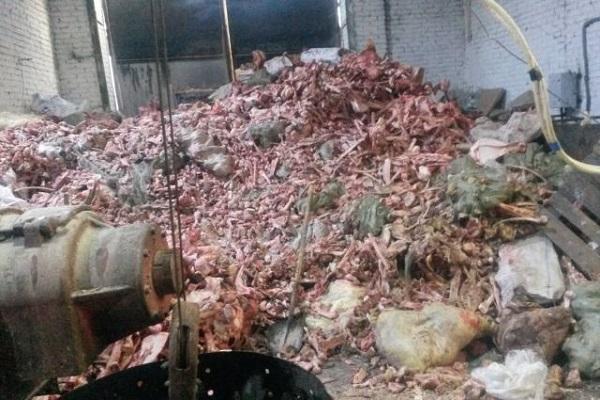
How to choose?
Criteria for choosing high-quality meat and bone meal for chickens:
- production date, shelf life - no more than a year;
- color - from light brown to brown;
- the smell is specific, but without mustiness, mold and sour tint;
- consistency - dry, friable powder, granules up to 12.7 mm in size;
- composition - foreign inclusions, preservatives are unacceptable.
The increased moisture content of the composition increases weight and reduces shelf life. Too light or yellowish tint indicates the addition of chalk and soy, which reduces the protein value of the mixture. Such falsification significantly increases the profits of unscrupulous manufacturers, but changes the composition of the supplement, reducing the protein value. And an excess of calcium is dangerous by a decrease in the absorption of feed, a violation of the productivity of the bird.

Composition for grades 1 and 2 with a standard percentage:
- protein (42-50%);
- ash (30-26%);
- fats (18-10%);
- water (10-9%);
- fiber (no more than 2%);
- antioxidant (no more than 0.02%).
It is important to select suppliers with the proper level of control over the safety of raw materials and timely cleaning of equipment. This minimizes the risk of infectious diseases, poisoning of poultry toxins, obesity.
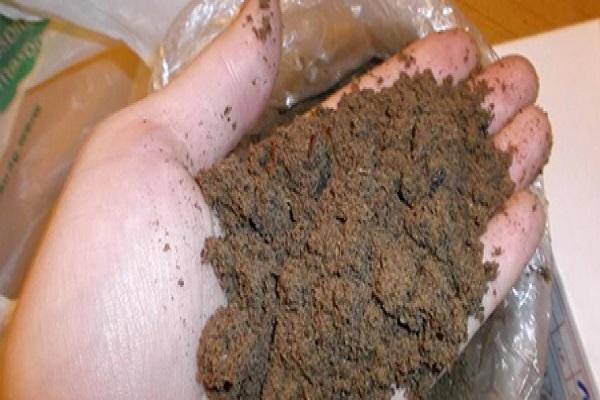
Self-production
Meat and bone meal for chickens can be made at home using improvised equipment. This will ensure the freshness of raw materials and the absence of extraneous components in the composition of useful feeding. As with industrial production, there are three main steps required:
- Soften meat and bones.
- Dry raw materials.
- Grind the product into powder.
Bones are heated and softened both in fuel or electric ovens, and on an open fire. Use dishes that allow excess moisture to evaporate well. You need to add trimmings to the bones by pre-welding it and bringing it to the consistency of minced meat. Well-dried raw materials are ground in a mortar, blender or grain grinder. To obtain a significant amount of the product, it is required to purchase drying and grinding equipment with high productivity.
This is advisable for multi-purpose farms with a large volume of meat waste.
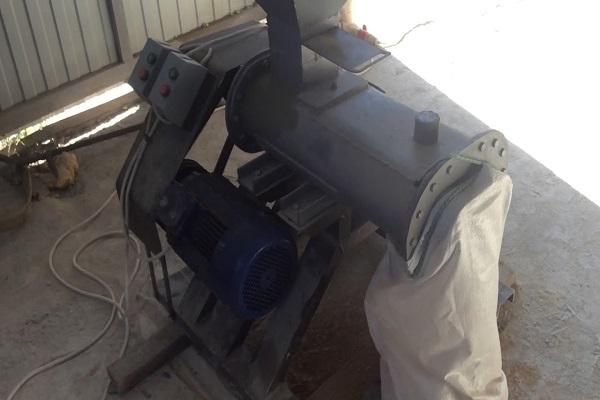
How to give bone meal to chickens
Meat and bone powder can be fed in dry, wet or mixed feed of your own production. This component is already present in most ready-made compound feeds.
When using other additives, premixes, it is important to correlate their dosage and composition, so that there is no excess of protein and trace elements in the diet.
Doses for hens
The main need for protein, calcium and other microelements in adult chickens of egg breeds is associated precisely with the production of eggs and shells. Each layer should receive meat and bone meal up to 7-10% of the total feed volume, which is 7-11 grams per day. For a 5000 gram portion of feed, you need to take 250 grams of protein powder and 4500 grams of other balanced components.
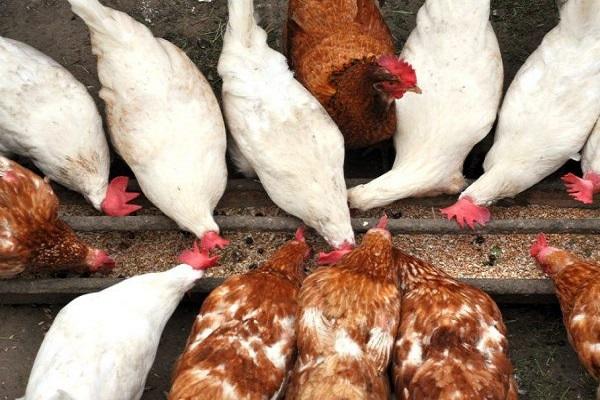
Dosage for broilers
Smooth introduction of the feed additive into the diet of young broiler breeds will accelerate weight gain, strengthen bone tissue without danger to health. This is given to chickens no earlier than 6 days of life at 0.5-1 grams per individual per day. Then add 1 gram every 10 days. In 60 days, the portion will be 4.5-5 grams, it is retained for the entire further time of keeping the bird.
For chickens
Young egg breeds of chickens are injected with this mineral feed no earlier than 11 days of life, 1 gram per individual per day. Further:
- 21-30 days - 1.4 grams;
- 31-40 days - 2.8 grams;
- 41-60 days - 3.5-4 grams.

Storage rules
Since meat and bone meal is a natural product, it is important to follow the storage rules for an organic product.
Caution: when meat and bone meal overheats and at the end of the shelf life, fat decomposition and the appearance of toxic aldehyde acrolein are likely.

The optimal storage place is away from direct sunlight, and preferably darkened, with a temperature not higher than +30 ° C. Industrial products contain additives that prevent oxidation and extend shelf life.
The maximum shelf life, subject to temperature conditions and in unopened factory packaging, is 12 months. Protein powder of our own production and from opened bags must be stored in an airtight container, jar or bottle. It is important not to forget to close the container tightly each time so that the additive does not get damp.



